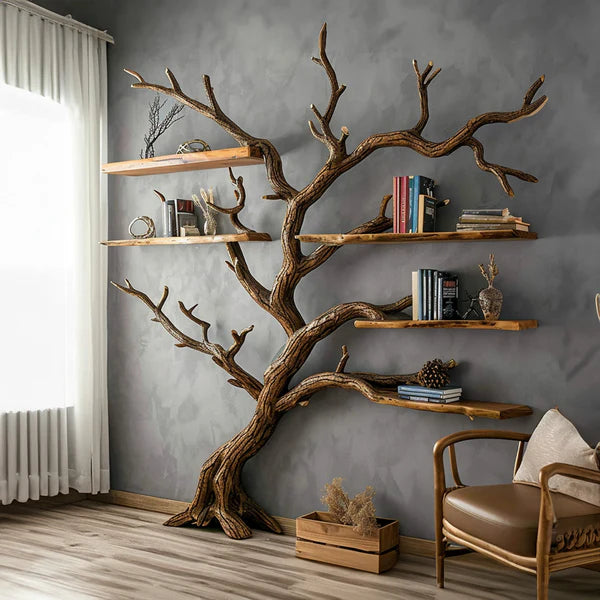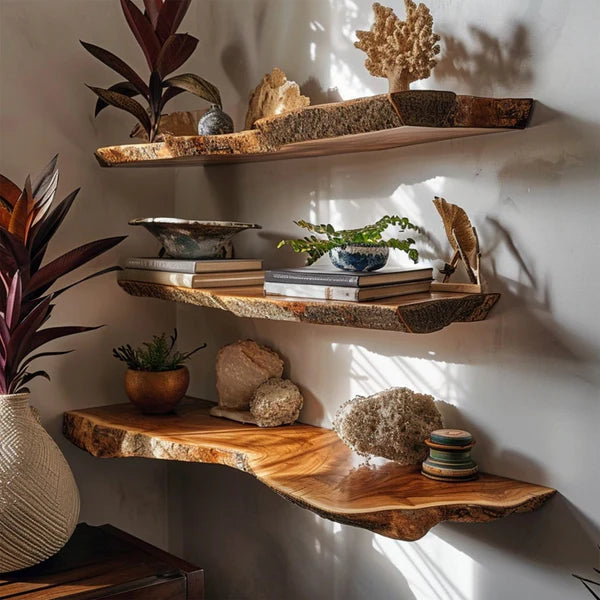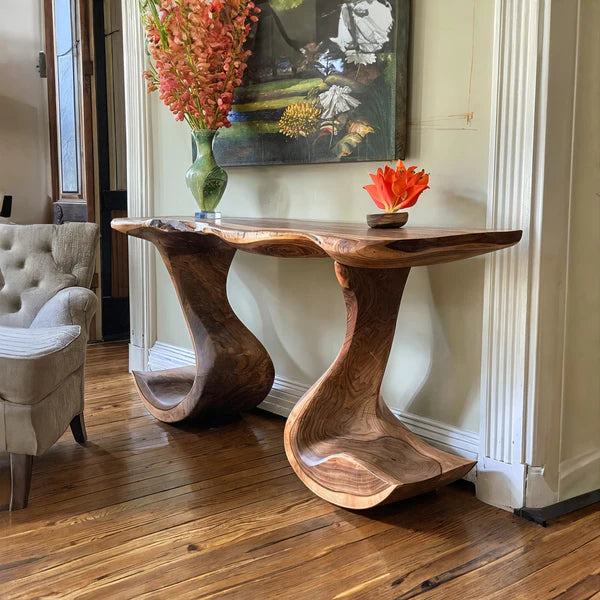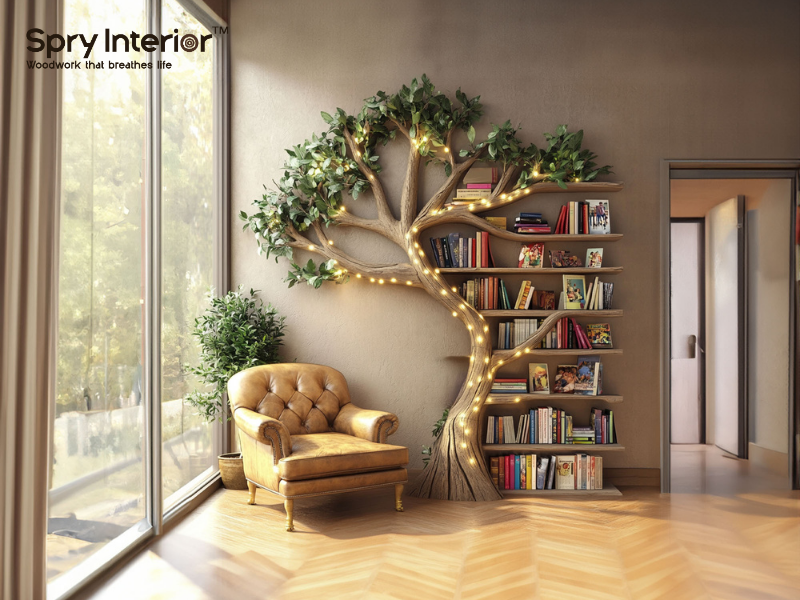If you're designing your perfect reading nook or upgrading your living room storage, you’ve likely found yourself asking, What wood should I use for a bookshelf? It’s a more important question than it first appears. A bookshelf isn’t just a functional piece; it’s also a statement of style, craftsmanship, and durability. The wood you choose impacts not only the visual appeal of your bookshelf but also its strength and longevity. In this article, we’ll dive deep into everything you need to know to make the best decision, from popular hardwoods to budget-friendly alternatives, and why SpryInterior could be the partner you need for a stunning, lasting result.
Understanding the Basics: Types of Wood for Bookshelves
Hardwoods: Strength Meets Elegance
Hardwoods like oak, maple, and walnut are often the first choice for anyone serious about building a bookshelf that can stand the test of time. These woods are dense, durable, and resistant to wear, making them ideal for heavy book collections. Oak, for example, provides a classic look with prominent grain patterns, while maple offers a smoother finish that's perfect for modern interiors. Walnut, with its rich dark color, adds a touch of luxury that transforms any room.

Buy now: Black Tree Bookshelf Floating Shelf Bookcase
Softwoods: Budget-Friendly and Versatile
Pine and cedar are two common softwoods used in bookshelf construction. They’re easier to work with, lighter, and typically more affordable than hardwoods. Pine, in particular, is popular because it takes paint and stain well, allowing for a wide range of design possibilities. However, softwoods are generally less sturdy than hardwoods, so if you’re planning to store heavy hardcover books, reinforcement may be necessary.
Engineered Woods: Modern Solutions
When budget constraints or design flexibility are key, engineered woods like MDF (Medium-Density Fiberboard) and plywood come into play. These materials are manufactured for consistency and stability. However, when considering Is plywood or solid wood better for shelves?, remember that while plywood can offer excellent structural integrity when used properly, it might lack the natural beauty and uniqueness that solid wood brings to a piece.
Choosing Based on Durability and Load-Bearing Capacity
How Much Weight Will Your Bookshelf Hold?
One of the first things to consider is the total weight your bookshelf will need to support. If you're an avid reader with a hefty collection of hardcovers, the structural demands will be much higher. Hardwoods are the best option here due to their impressive load-bearing capacity. A bookshelf made from solid oak, for instance, can comfortably support substantial weight without sagging.

Buy now: Corner Branch Shelf Wood Bookcase Wall Mounted
Shelf Span and Thickness Matter
The thickness and span of the shelf play critical roles in durability. A wider span between supports can cause sagging, even with stronger woods. Typically, a solid wood shelf that's around ¾ inch thick will serve most purposes, but adding more thickness or support brackets can significantly enhance strength, especially when using softer woods or MDF.
Moisture Resistance and Stability
Humidity and temperature changes can wreak havoc on certain types of wood. Hardwoods tend to resist these fluctuations better, maintaining their shape and integrity over time. In contrast, lower-quality plywood and MDF may swell or warp if not properly sealed. This consideration is crucial if you live in an area with a variable climate or plan to place your bookshelf near a window or heat source.
Aesthetic Considerations: Matching Wood to Your Decor
Traditional Styles: Rich Grains and Warm Tones
For traditional interiors, woods like oak, mahogany, or cherry are often the go-to choices. Their deep hues and prominent grains exude a timeless charm. If you're envisioning a library-like atmosphere in your home, these woods will create that classic, scholarly feel.

Modern Minimalism: Clean Lines and Light Colors
Modern, Scandinavian, or minimalist spaces typically favor lighter woods such as birch, maple, or ash. These woods offer a cleaner, more subtle grain that complements the sleek lines and neutral palettes commonly found in contemporary homes. Painting or staining a light wood can further adapt it to your exact aesthetic needs.

Rustic and Farmhouse Appeal: Distressed and Natural Looks
If your design leans toward a rustic, farmhouse, or industrial style, reclaimed woods, distressed finishes, or even rough-cut lumber could be ideal. These styles embrace imperfections like knots and uneven grain, adding character and warmth. Pine is a favorite here, often finished with a weathered or whitewashed look to enhance its rustic charm.
Why Choosing SpryInterior is the Best Option for Your Bookshelf
Expertise in Material Selection
At SpryInterior, we understand that selecting the right material can make or break a project. That’s why we offer expert guidance on every piece of furniture we craft. Whether you are wondering, What is the best wood for a bookshelf, or you need advice on styling your new piece, our team brings years of experience and attention to detail to every project.

Customization that Matches Your Vision
Each home and homeowner is unique. At SpryInterior, we believe that your bookshelf should reflect your personal style and meet your functional needs. From choosing between solid hardwoods and engineered alternatives to selecting stains, finishes, and designs, we provide fully customizable options. Whether you prefer the rich grain of walnut or the smooth subtlety of maple, we tailor every project to your vision.

Quality Craftsmanship and Sustainable Choices
Today’s consumers are more conscious than ever about sustainability. At SpryInterior, we prioritize responsibly sourced materials and eco-friendly processes. Our commitment ensures that when you choose us, you're not only getting a beautifully crafted bookshelf but also contributing to a healthier planet. If you’ve been asking, What is the best board for a bookcase?, rest assured that every board we use is selected with quality, durability, and environmental responsibility in mind.
Conclusion
In answering the important question, What wood should I use for a bookshelf?, it becomes clear that there’s no one-size-fits-all solution. Hardwoods like oak and maple offer unparalleled durability and classic beauty. Softwoods provide affordable and versatile options, while engineered woods like plywood give budget-conscious builders an excellent compromise, provided they're used thoughtfully. Balancing strength, style, and budget will ultimately lead you to the right choice for your home and your lifestyle.
If you find yourself still weighing the options, remember that partnering with experts like SpryInterior can make the decision easier and ensure a final product that is not only functional but a true reflection of your personal style. Whether you prioritize strength, beauty, or eco-consciousness, the right bookshelf begins with the right wood, and the right craftsmanship to bring it to life.








Leave a comment
This site is protected by hCaptcha and the hCaptcha Privacy Policy and Terms of Service apply.